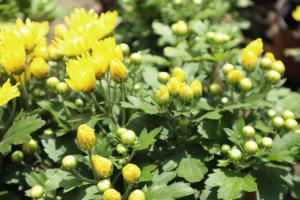How Far Apart to Plant Loblolly Pine Trees
Loblolly pine trees, also known as Pinus taeda, are commonly grown for timber production and forest restoration. When planting loblolly pine trees, it's essential to determine the proper spacing between them. The distance between the trees influences their growth, health, and overall productivity. In this article, we'll discuss different factors that affect the spacing of loblolly pine trees and how far apart to plant them.
Factors that Affect Spacing
Several factors need to be considered before determining the spacing of loblolly pine trees. These are:
1. Soil Type
The type of soil in which the loblolly pine trees are grown determines their health and growth. Sandy, well-drained soils provide an ideal environment for loblolly pines, while clay soils or soils with poor drainage can cause slow growth or root rot. Trees planted in less conducive soils should have a wider spacing to allow for increased root growth.
2. Climate
The climate of the region where the loblolly pine trees are grown also affects the spacing. In areas with hot summers or prolonged dry spells, the trees should be spaced wider to avoid water competition. In areas with colder winters, the trees should be closer together to provide shelter and reduce exposure to freezing temperatures.
3. Available Land
The amount of available land also affects the spacing of trees. If the land is limited, the trees should be planted closer together to maximize the space. If the land is abundant, the trees can be spaced farther apart to allow for future growth and maintenance.
Recommended Spacing for Loblolly Pine Trees
The recommended spacing for loblolly pines varies depending on the purpose of the plantation, soil type, and climate. For timber production, the trees should be spaced closer together to promote vertical growth and straight stem formation. For forest restoration, wider spacing allows for increased root growth and better canopy coverage.
The following are the general ranges for recommended spacing:
1. Timber Production
6 x 8 ft (1.8 x 2.4 m) - for the production of small sawlogs, poles and posts
8 x 8 ft (2.4 x 2.4 m) - for the production of larger sawlogs with straighter stem formation
2. Forest Restoration
8 x 10 ft (2.4 x 3.0 m) - for sites with sandy, well-drained soils and/or warmer climate
10 x 10 ft (3.0 x 3.0 m) - for sites with clay soils or poorly drained soils and/or cooler climate
It's essential to note that these ranges are only general recommendations. The final spacing should be determined based on local conditions, purpose of the plantation, and tree size at planting.
Conclusion
Proper spacing plays a critical role in the growth, health, and productivity of loblolly pine trees. The spacing should be determined based on the soil type, climate, and available land. For timber production, closer spacing promotes vertical growth and stem formation while for forest restoration, wider spacing allows for better root growth and canopy coverage. While general recommendations exist, the final spacing should always be determined based on local conditions and tree size at planting.

 how many times do yo...
how many times do yo... how many planted tre...
how many planted tre... how many pine trees ...
how many pine trees ... how many pecan trees...
how many pecan trees... how many plants comp...
how many plants comp... how many plants can ...
how many plants can ... how many plants and ...
how many plants and ... how many pepper plan...
how many pepper plan...






























